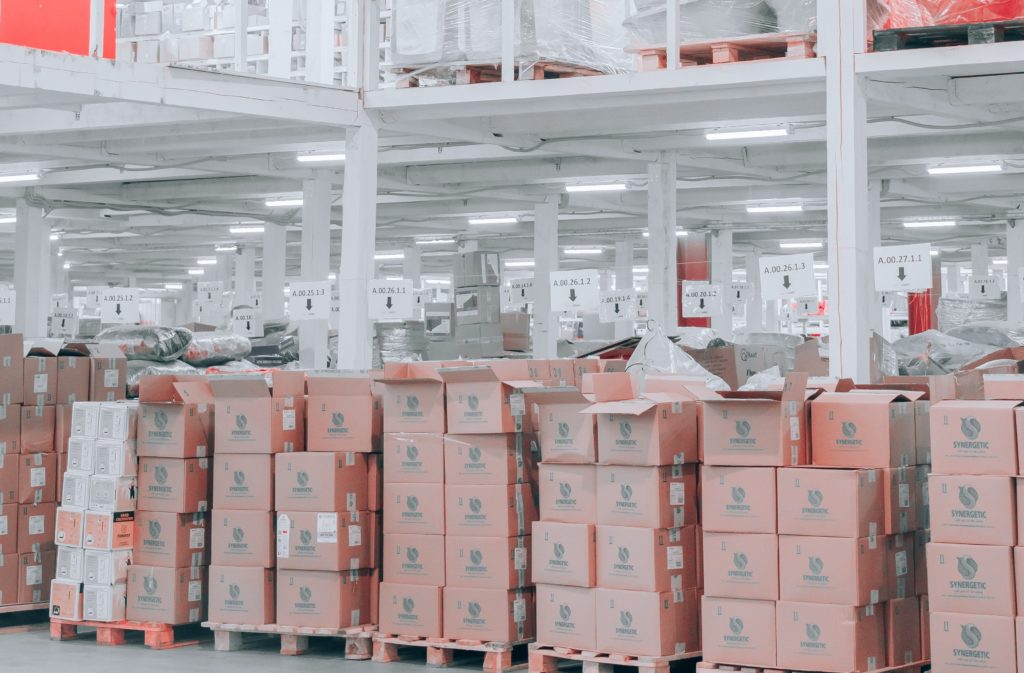
Since the start of the pandemic, online shopping has seen tremendous growth very quickly. According to the Census Bureau, e-commerce sales increased by 43% in 2020, and again by 14% in 2021. Some sources are projecting over 70% revenue growth from 2019-2023.
While this is welcomed news for e-commerce brands, the surge in shopping created by the pandemic has made a mess of the global supply chain. Nearly 4 out of every 10 small businesses have experienced supply chain disruptions or delays in the United States. These disruptions are frustrating for customers, and anxiety-inducing for business owners who worry about losing their frustrated customers.
On top of that, as competition within the industry increases, customers have come to expect shorter delivery times. And marketing shorter delivery times only intensifies the pressure that shipping and handling departments are feeling.
The material handling industry has been completely upended by this sudden high demand. Shipping delays have affected most major players on the world stage, like the US, China, Russia, and Ukraine, and the effects trickle upward from raw material suppliers all the way to the end users.
In order for packaging facilities to process packages at a high rate, they must be able to depend on 3 things: proper equipment, staffing, and up-to-date technology.
These 3 components are crucial for packaging facilities to successfully navigate shipping delays. This post will highlight the main problems that a packaging facility faces related to shipping delays, how to plan ahead, and mitigate shipping delays.
Equipment and Parts
No packaging facility is cookie-cutter. Different products and packages require different approaches, different equipment, and carries its own unique set of challenges and requirements. If outfitted with the wrong (or outdated) parts and equipment, it can add an extra load of stress, especially during those peak seasons. Without every piece of the puzzle working together seamlessly, delays are inevitable.
Outfitting your facility with up-to-date equipment is the best way to avoid pesky delays and costly downtime. Staying up-to-date requires an intimate knowledge of your own system and consistent dialogue with your installation partners and engineers.
Here are a few tips to keep your parts and equipment up-to-date:
- Perform regularly scheduled checkups of your parts and equipment to ensure that you head off concerns before they become problems.
- Some parts wear quicker than others. Stay in front of these issues by keeping replacements for these parts handy. This is the simplest way to prevent downtime or delays.
- Stay in touch with your installation partners, who can help you keep up with industry trends and ensure you know your systems inside and out.
Staff Shortage
The spike in consumer demands created its own issues for companies that sell products online. But on top of that, global worker shortages have made it extremely difficult for packaging facilities to process orders as quickly as they’re coming in. With fewer workers to carry out manual tasks, shipping delays are becoming inevitable.
Although some are returning back to the workforce, staffing continues to be an issue for many companies. As a result, many packaging facilities are now looking to robotics and automation to speed up processes or fill in gaping holes. In fact, as many companies turn toward robotics and automation, we believe it’s becoming the way of the future.
As staff shortages continue to plague many companies across various industries, there are a handful of ways to combat these shortages and reduce shipping delays.
- Improve company benefits and perks.
- Get help with recruitment.
- Encourage opportunities for growth in the company.
- Automate where you can.
Technology
Over the last 20 years, technology has been one of the most mercurial facets of material handling. The ever-changing technological front can make it difficult for facilities to stay up to date, which leads to inaccurate information and slower processing — which is ultimately what leads to delays.
But technology plays an increasingly important role in driving down costs and increasing speed and predictability within packaging facilities.
Practically speaking, there are a number of clear-cut ways you can leverage technology to reduce shipping delays:
- Keep your current systems versions up to date.
- Note parts and equipment that haven’t been replaced in awhile. Look for equipment that has improved dramatically over the years, and if replacement of this equipment makes sense for your business.
- Monitor your parts and equipment a few months before peak season, so you aren’t caught off guard when the rush comes.
- Maintain communication with your system engineers for them to analyze, review, and update your systems.
With the state of our global supply chains, it may not be possible to entirely eradicate shipping delays, but there are ways to stay proactive and mitigate those possibilities. While most shipping delays are caused by circumstances outside of your control, it’s never been more crucial to eliminate causes that ARE within your control.
And, the most significant way to stay on top of your game is to keep a body of support around your systems.
Hiring a material handling partner can help you:
- properly analyze your systems
- inspect your equipment
- inform you of the potential improvements your facility
- and most of all, help you to improve your processing systems on a consistent basis.
If you don’t have a team of material handling experts on your side to help you streamline your systems, we would love to help you. Call us today at (844) 845-7580.




